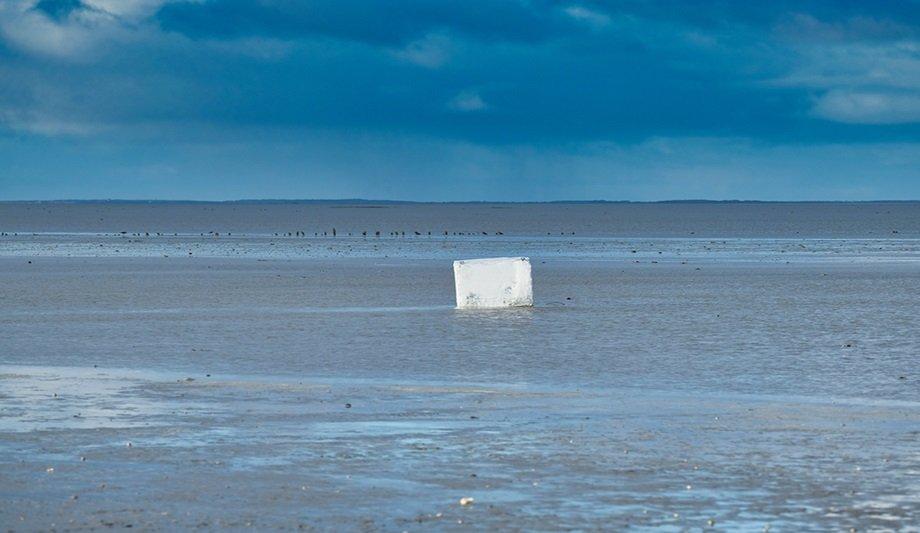Millions of cargo containers are transported each year, and only a tiny fraction are lost at sea. However, the number of lost containers has increased in recent years, propelled by high-impact incidents that skewed the numbers upward.
Factors impacting the higher number of lost containers include more violent weather events (due to global warming) and rough seas. Stresses on the global supply chain have led to higher numbers of containers loaded per ship and possibly less care being taken when securing them. Ships are getting larger, and containers are being stacked higher. Port congestion, a symptom of supply chain problems, is adding stresses that can cause human error.
Poorly maintained equipment
Circumstances impacting container losses also include rare events such as ship groundings, structural failures, and collisions. Damaged containers, worn-out constraints and poorly maintained equipment are other factors. Human error can include failure to follow guidelines, poor distribution of weight, cargo improperly packed, and human fatigue.
Damaged containers, worn-out constraints and poorly maintained equipment are other factor
According to the World Shipping Containers Lost at Sea Report for 2020-2021, the number of containers lost overboard represents less than one thousandth of 1% (0.001%) of the millions that are transported. However, in the last couple of years, the percentage (although remaining small) has increased by 18%. For example, the winter of 2021 saw an unusually high number of incidents — 3,113 container losses, many weather-related, compared to 779 in the previous period.
Container shipping industry
In all, during the period of the study, international liner carriers managed 6,300 ships to deliver $7 trillion in supplies inside approximately 241 million containers. Only a tiny few were lost. Losses of containers can range from a single container that is not mounted correctly to a major disaster in which an entire ship sinks.
The average shipping container represents about $50,000 in value, which translates into millions of dollars lost at sea each year. Even so, the loss is negligible compared to the massive scale of the container shipping industry. There are also environmental considerations: Lost containers can add pollutants, including plastics, to the oceans.
Shipping container losses
Between 2008 and 2019, there was an average of 1,382 containers lost at sea each year
Between 2008 and 2019, there was an average of 1,382 containers lost at sea each year. Skewing the average upward was a shipping accident in June 2013 in which the MOL Comfort broke in two and sank about 200 nautical miles off the coast of Yemen. Some 4,293 containers sank into the Indian Ocean.
2021 saw the largest spike in shipping container losses since 2013. Between November 2020 and April 2021, an estimated 3,000 containers were lost in the North Pacific in five incidents, double the annual average within a matter of weeks.
Exceptional container losses
Parametric rolling movement (PRM) has been a factor in some incidents with exceptional container losses that occurred during the winter season 2020-2021.
The PRM phenomenon can cause a ship to roll at extreme angles of up to 30-40 degrees
The PRM phenomenon can cause a ship to roll at extreme angles of up to 30-40 degrees or more and may in extreme cases lead to capsizing of the vessel. PRM mainly affects modern container vessels and car carriers that have hull forms with flared fore and aft decks. Rolling motion can cause containers to break free from their lashings and be tossed overboard.
The ONE Apus ship lost more than 1,800 containers during a storm in the Pacific Ocean northwest of Hawaii in November 2020. Just a couple months later, the Maersk Essen lost 689 containers overboard during a routine voyage from China to Los Angeles. In the Maersk event, an investigation determined that heavy rolling was most likely a result of parametric rolling.
Modern container ships
The loss of containers and their impact on the marine and coastal environments has raised public and political concerns about the safety and environmental impact of modern container ships.
The three-year Top Tier project involves active participation of major stakeholders
In response, the MARIN maritime institute’s Top Tier Joint Industry Project seeks to evaluate container securing processes and to improve regulations and practices to avoid such loss of containers at sea amid an increase in the size of deep-sea container ships over the past decades. The three-year Top Tier project involves active participation of major stakeholders, including the World Shipping Council and member lines. Phase 1 reviewed current practice and incidents and identified gaps.
Container lashing equipment
Phase 2, beginning in mid-2022, engaged six working groups to conduct detailed technical research and investigations. Phase 3 will combine the results into practical safety improvements and specific, actionable recommendations to reduce the risk of losing containers overboard.
Improvements to the Safety of Life and Sea (SOLAS) convention have previously reduced risks of lost containers, including creation and communication of the Code of Practice for Packing of Cargo transport units (CTU Code) and ISO standards for container lashing equipment and corner castings.

